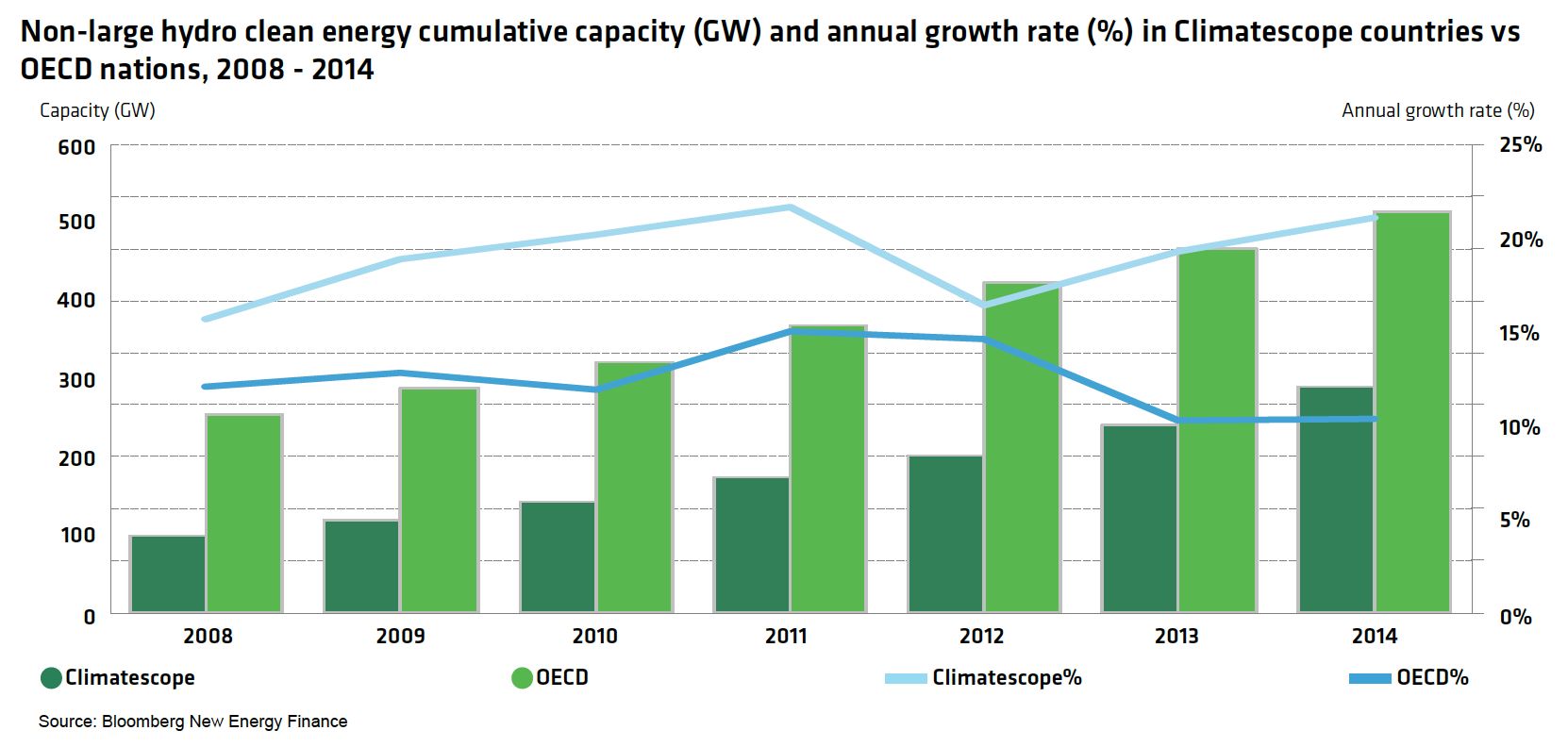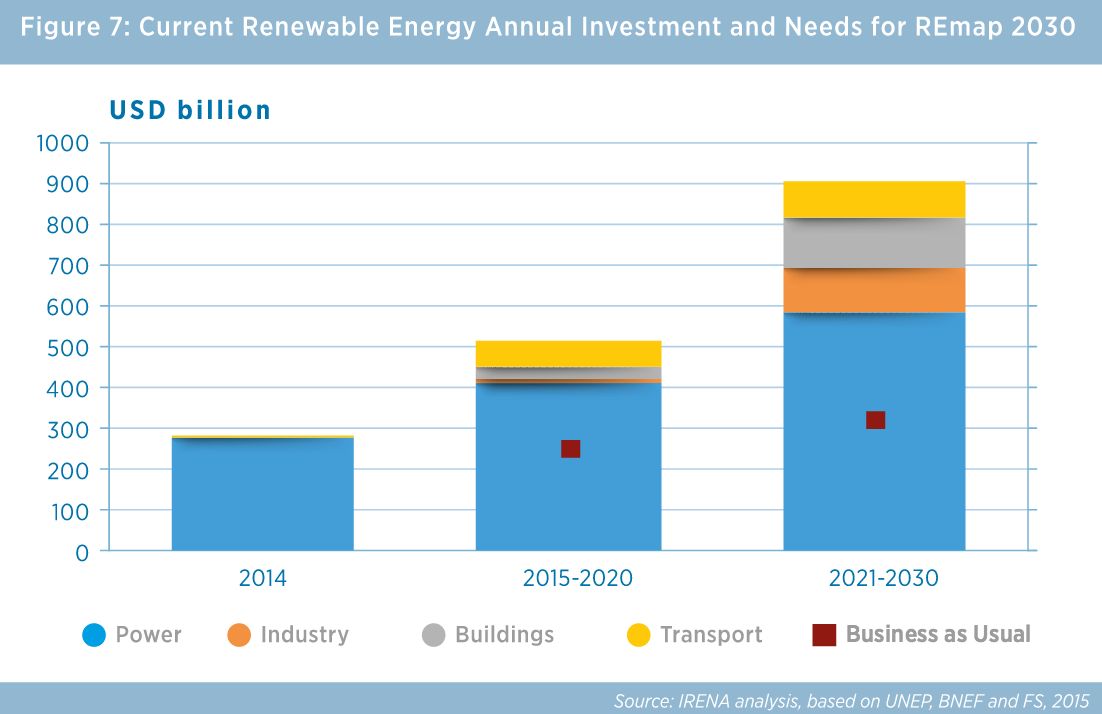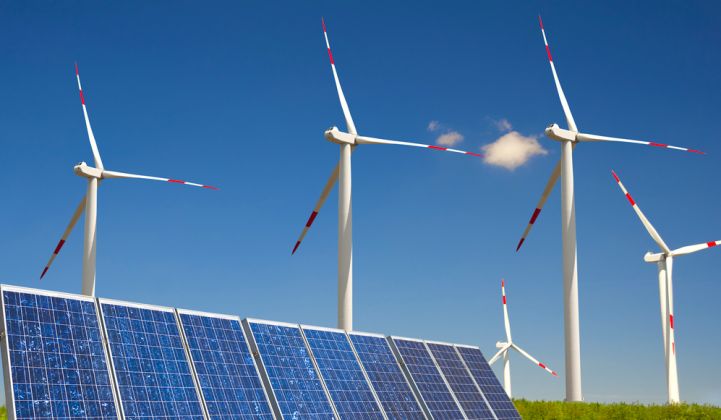Emerging economies attracted record levels of clean energy investment last year, surpassing investment in wealthier nations for the first time ever, according to a new report by Bloomberg New Energy Finance (BNEF).
In 2014, the 55 developing nations studied in the Climatescope report brought in $126 billion in clean energy investment -- up $35.5 billion, or 39 percent, from 2013 levels.
These countries installed a total of 50.4 gigawatts of new clean energy capacity last year -- up 21 percent from 2013. In another first, renewable energy capacity deployed in emerging markets surpassed the amount deployed in wealthier OECD countries.
Furthermore, the majority of investment did not stem from OECD countries. Rather, it was investment from developing countries to other developing countries, which jumped to $79 billion in 2014, up from $53 billion in 2013.
China played a major role. Last year, China added 35 gigawatts of new renewable generating capacity on its own, which is more than the clean energy projects built last year in the U.S., Britain and France combined.
Large hydropower projects were not included in the report’s clean energy calculations. Instead, the authors focused on solar, wind and other clean energy technologies that can be deployed more rapidly.

These findings are notable ahead of high-stakes climate talks in Paris next week, where there’s expected to be a strong focus on how much capital wealthier countries should transfer to lesser-developed countries to address the threat of climate change.
“In advance of Paris, the good news highlighted in this report is that emerging markets truly can attract investment in clean energy,” Ethan Zindler, head of U.S. research at BNEF, wrote in an email. “The perhaps even better news is that this is being driven less by concerns about climate change than other factors.”
Technology cost declines coupled with abundant natural resources have made renewables the lowest-cost energy option in many countries, he said.
Solar PV costs, for instance, have dropped 15 percent year over year. This has made solar competitive with fossil-fuel generation, especially in sunny places with high electricity prices. According to GTM Research, average global PV system installed costs are expected to fall another 40 percent in the coming years, from $2.16 per watt in 2014 to $1.24 per watt by 2020.
For many emerging economies, the adoption of renewables is also tied to energy security. In many cases, countries rely on imports of coal and gas, and in some cases oil, which are vulnerable to price volatility and supply disruption.
As demand has increased, multilateral development banks have also become more adept at financing clean energy projects in emerging economies. The World Bank, the Export-Import Bank, the Overseas Private Investment Corporation and others have led successful investment initiatives separate from United Nations-led efforts.
Renewable energy is still expected to be a strong focus at the upcoming U.N. climate talks, however.
A separate report released this week by the International Renewable Energy Agency (IRENA) found that scaling up renewable energy to 36 percent of the global energy mix by 2030 would result in half of all emissions reductions needed to keep global warming below the 2 degree Celsius threshold. Energy-efficiency measures could make up the other half.
To achieve a 36 percent share of total energy renewable energy adoption would have to increase sixfold from current levels. That would require global investment to reach $500 billion per year in the period leading up to 2020, and more than triple to $900 billion from 2021 to 2030. In 2014, overall clean energy investment totaled $310 billion, according to BNEF.

Many stakeholders argue that rich countries that have benefited from decades of unrestrained fossil-fuel use have an obligation to financially support decarbonization efforts around the world. Disagreement over the responsibilities of “have” countries and “have-not” countries has played a role in derailing previous attempts to reach a global climate-change agreement.
According to Zindler, the BNEF Climatescope report helps to reframe the discussion.
Of the $126 billion invested in emerging markets, he noted that approximately 70 percent took place in China. Factoring in the remaining "BRIC" nations -- Brazil, Russia and India -- the total comes to more than $100 billion. With the addition of "middle-income" nations, the total rises further.
So while the report shows that clean energy adoption can expand on its own today without a big international push, “the very least developed countries still account for just a tiny sliver of overall investment,” said Zindler.
“I'd argue that the study suggests that the simple ‘have’ versus ‘have-nots’ dichotomy that often gets set up -- with nations such as China and India putting themselves in the ‘have-nots’ category -- probably requires a bit more nuance,” he added. “The largest emerging market nations along with others in the ‘middle-income’ category are achieving real results, largely without the help of an international pact. But the poorest nations still lag behind.”



